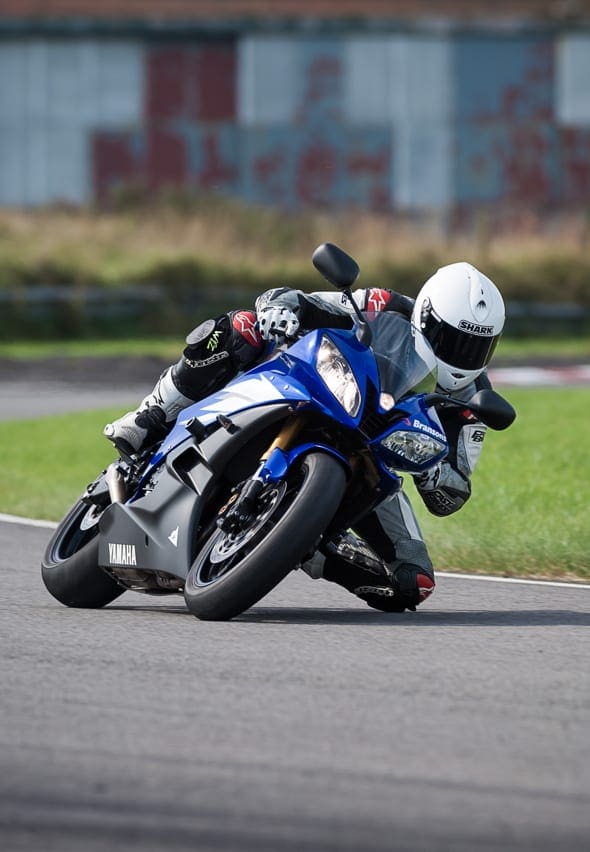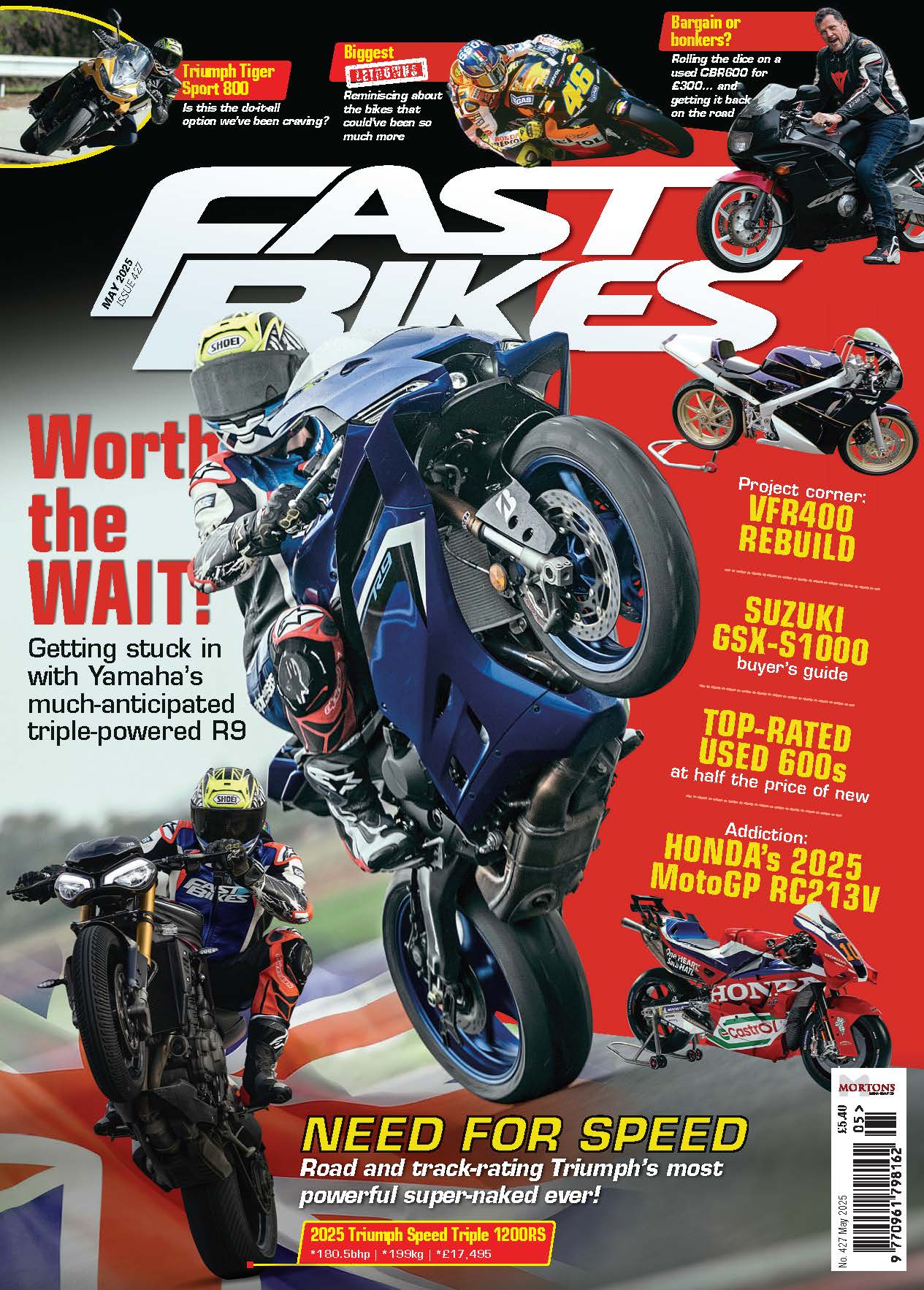Before I give you the wrong impression, let me admit that I can’t always do this perfectly. One time in three maybe – sometimes more, sometimes less. Sometimes success is just the absence of failure. So if, like me when I was looking in mountain bike magazines 25 years ago, you think you can do better than the pictures you see but aren’t quite sure where the bar is set, this might just be the information you need.
This is our Alastair on a borrowed R6, going the wrong way round Llandow circuit in September of 2010. OK so almost none of that is pertinent… but wait. We hadn’t done this before, so we had to waste precious minutes of our session shooting “wrong” passes so that I could see where he’d be knee-down, and then get to the right spot for framing him up through the lens I was using. Then another pass or two to fine-tune the angle (how much of the bike’s side is visible relative to its front) and also the angle of the sun across the shot. Then throw in the sun going in-and-out, and that the exposure has to be quite accurate because of the white helmet and dark shadows.
A couple of things that make it more work, but then easier:
• I use a fixed lens. I have to walk around a bit more, but it lets in more light so the camera’s focusing is more reliable, and on the lower iso setting there’s a bit more room for exposure error.
• Manual exposure means more to think about but avoids embarrassing admissions that you need another pass because the headlight shining into the lens has made the shot look like a moonlit night. It happens quite often on front three-quarter cornering shots.
And what it boils down to is this:
• 300mm lens on a 12 megapixel, 1.5x crop-factor camera – in this case a Nikon D2x – so that there’s enough detail for anything a magazine would want, and so that you’re far enough away to get into a safe place. The viewpoint is as low as possible – I generally only stand up if it’s a safety issue.
• a shutter speed that’s not so fast that the wheels and tyres are frozen. This was at 1/640th as the bike’s moving fairly quickly.
• framing is fairly tight, possibly too tight here but I don’t like having to crop into a sensor that size.
• it’s very simple. Track, grass, a bit of stripy kerb, barrier, bank. The warehouse background is one unbroken facade. Basically, no distractions.
• three goes should be enough to get one good enough. My own rule is that if a lightroom export sharpened “matt paper high” at 75% size – for this camera that’s 3216×2136 pixels – looks perfect at 100% on my screen then that’s fine.
So that’s your basic requirement – a front three-quarter, left-to-right, knee-down full page picture, let’s say a typical cover image. Sometimes we need to be able to knock this out in ten minutes. Pick a location, check the light, set the camera, swear at the clouds, walk thirty yards for a better angle, three more passes and a guaranteed good-enough result. Success… or at least not failing.
Jonny Gawler





